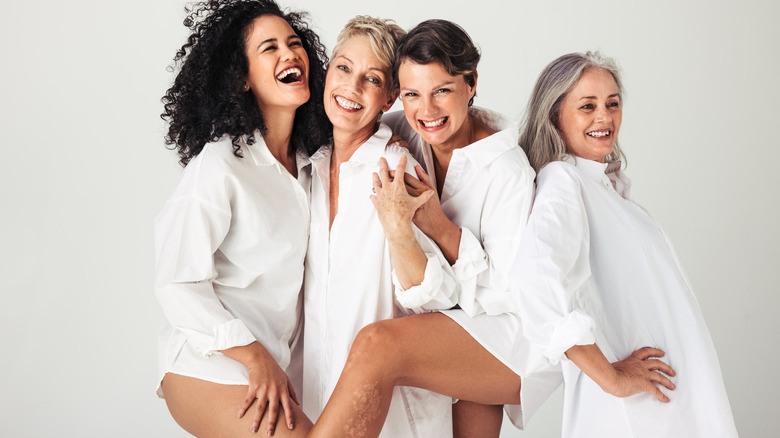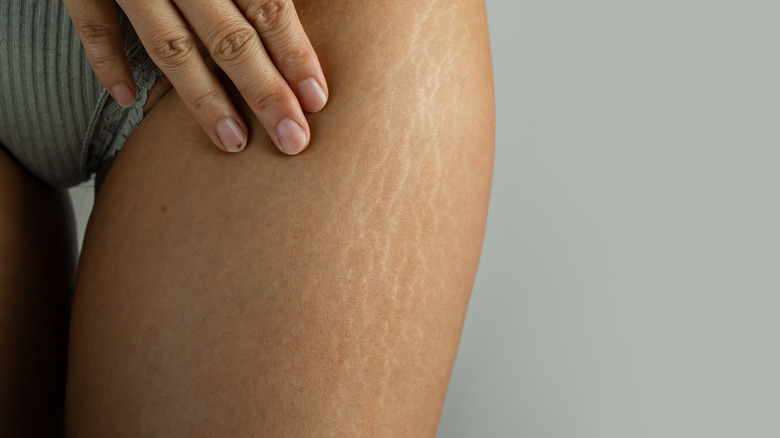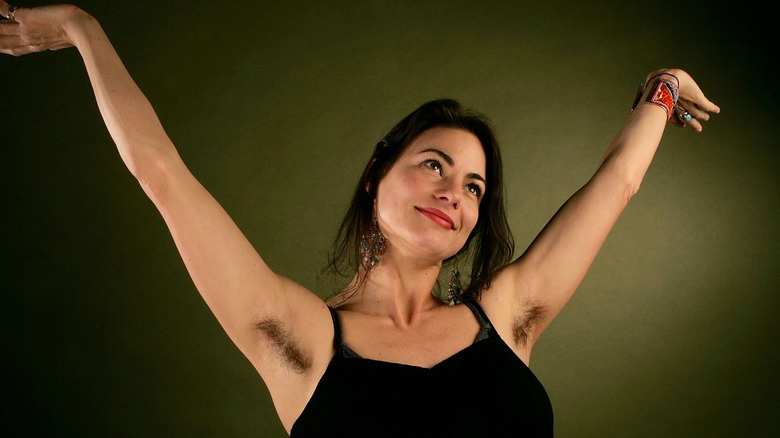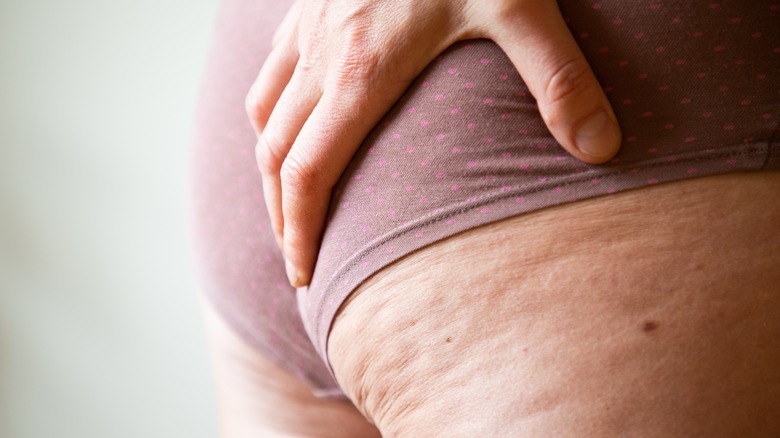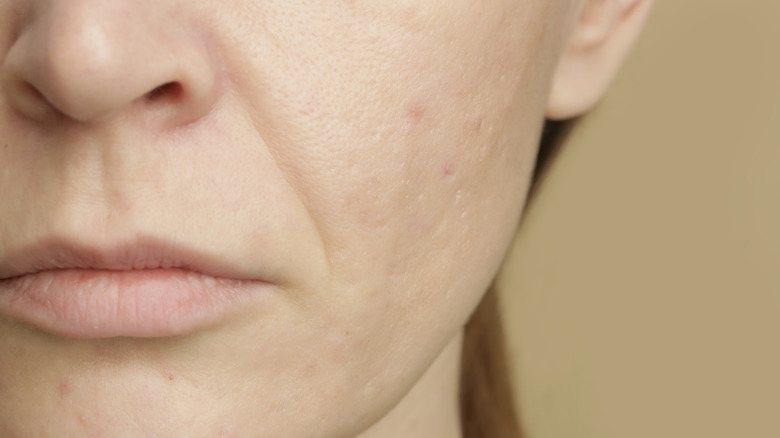Why There's No Such Thing As A Body 'Flaw'
We may receive a commission on purchases made from links.
For centuries, society has pushed women into believing that in order to look and feel beautiful, the attainment of a certain body type is essential. From sculpture to paintings to fashion magazines to popular culture, the stereotypical portrayal of women has historically made them feel insecure and unhappy about the way they look.
Statistics quoted by Do Something show that about 91% of women in the United States are dissatisfied with their bodies. As a result, they end up trying different types of diets to achieve what they think is the "ideal" body shape. The website also states that only 5% of American women naturally possess the body type which is portrayed as the "perfect one" in the media.
The scenario is even grimmer among teenagers as a study — titled, "Body image disturbance and the development of eating disorders" by Ann Kearney-Cooke and Diana Tieger — shows that approximately 50% of American girls aged 13 reported being unhappy with the way they looked, while 80% of girls aged 17 years were dissatisfied with their bodies.
And while there is still a long way to go for women to let go of the unrealistic beauty standards set for them by society, the idea of body positivity and greater awareness about the human body is making them realize that the physical traits they once considered flaws aren't flaws at all.
Having stretch marks
According to the blog Born To Be Worthless by Dr. Kevin Solomons, thousands of young women across the United States are lured into believing that the seemingly "perfect" bodies of models, actresses, and social media influencers that they see on magazines covers, TV, and social media, are real.
Little, however, do they know that the models rarely look the way they appear on Instagram or in magazine photoshoots because the images are heavily airbrushed and edited to remove all "flaws," such as stretch marks. In reality, however, stretch marks should not be considered a "flaw" to begin with, as they are natural and extremely common among women of all ages across the globe.
As explained by the Mayo Clinic, a lot of women have stretch marks on their stomachs, thighs, rear, arms, and breasts, and the phenomenon is completely normal. They can appear on your body during pregnancy, when you rapidly lose or gain weight, due to the intake of certain medication, or when you have a family history, among other reasons.
Per the Mayo Clinic, stretch marks usually fade away on their own, but sometimes, they stay forever. Either way, these marks are natural as they represent changes taking place in the human body. Therefore, they are nothing to be ashamed of and there is no need to hide them!
Uneven breasts
Akin to having stretch marks, having breast asymmetry — or having one of your breasts larger than the other — is very common and completely normal. As Healthline explains, breast asymmetry impacts more than half of all women, and it's nothing to be ashamed of.
There are many reasons why your breasts are not always of the same size, volume, shape, or form. For example, changes in the levels of your hormones throughout your menstrual years and during menopause can lead to breast asymmetry. Puberty, trauma, ovulation, and pregnancy — all of these can cause you to have one boob bigger than the other, the website says, adding that the only time you should be concerned is when you see a very significant difference between the sizes of your breasts.
According to Dr. Kirtly Jones — a reproductive endocrinology and infertility specialist from Salt Lake City, Utah — even if someone gets a breast implant, they will still not have perfectly even boobs.
"Well, it turns out that no woman is completely symmetrical," she told "The Scope," University of Utah's health podcast. "Even women who have had their breasts enhanced will not be completely symmetrical, just because the nature of who they were before they had the add-ons."
Therefore, if you see a celebrity having the so-called "perfect" pair of boobs and consider yours to be "flawed" because of the asymmetry, ditch the idea immediately!
Body hair
There was a time when the media and the fashion industry fueled the trend for women to go completely hairless to look "beautiful" and "desirable." In fact, the presence of body hair has long been considered "unsightly" on women. A 2013 study titled "Perilous Patches and Pitstaches: Imagined Versus Lived Experiences of Women's Body Hair Growth" by Breanne Fahs revealed that most women reported being "disgusted" by the idea of body hair, whether the hair was their own or someone else's. However, body hair is there for a reason — therefore, it should not be seen as something ugly or "removable." Fortunately, many women are breaking free of such stereotypes and are embracing their body hair (via Hum Nutrition).
According to Live Science, body hair may help humans detect parasites more easily, and they also play an important role in regulating body temperature (via CBHS). Speaking to Bustle, New York-based dermatologist, Dr. Michelle Henry, said that many factors contributed to hair growth in the body, which is a completely normal process. "There are some ethnic groups that tend to have a bit more hair, but it's completely normal and okay — unless it's associated with other signs of high testosterone," Henry said.
She added that since body hair could be an inherited trait and people belonging to certain ethnic backgrounds could have thicker and coarser hair, there is no need to be ashamed of that. "It's not something that should be critiqued, but it's an unfortunate truth," she said.
Cellulite
Just like stretch marks, having cellulite on different parts of your body is also quite common, and nothing to be ashamed of. According to the Cleveland Clinic, "Between 80% to 90% of all women who have gone through puberty have cellulite."
Many factors contribute to the development of cellulite in your body, including how thick your skin is, your age, your gender, and the amount of fat on your body (via Cleveland Clinic). The website further explains that cellulite may become more visible with age because the skin tends to lose its elasticity. Likewise, gaining weight can also make cellulite more visible. However, anyone can have it, irrespective of their weight.
"You may think cellulite relates to how much fat you have, but we see cellulite in people who are thin, normal weight and overweight," dermatologist Dr. Shilpi Khetarpal told Cleveland Clinic. But since cellulite does not impact a person's health or wellbeing and does not hurt them in any way, it should not be a cause of concern and, therefore, should not be considered a "flaw."
Smile lines
Smile lines, or nasolabial folds, are types of wrinkles that originate from the side of the nose and extend toward the curve around the mouth. They appear on a person's face as they age, and according to Healthline, there are several causes for that.
For instance, you can develop these lines due to the loss of collagen from your skin as you grow older. Moreover, you can also develop nasolabial folds if your skin is dehydrated or damaged because of the sun. Some people also get them because of their smoking habits or due to genetic reasons.
Even though there are several cosmetic procedures available to make these lines invisible for some time, including dermal fillers, thread lifts, or plastic surgery, they are very expensive for an average person. And since everyone will eventually develop them, they should not be seen as a flaw at all and everyone should learn to embrace them! After all, they're called smile lines for a reason — don't hide your happiness from the world!
